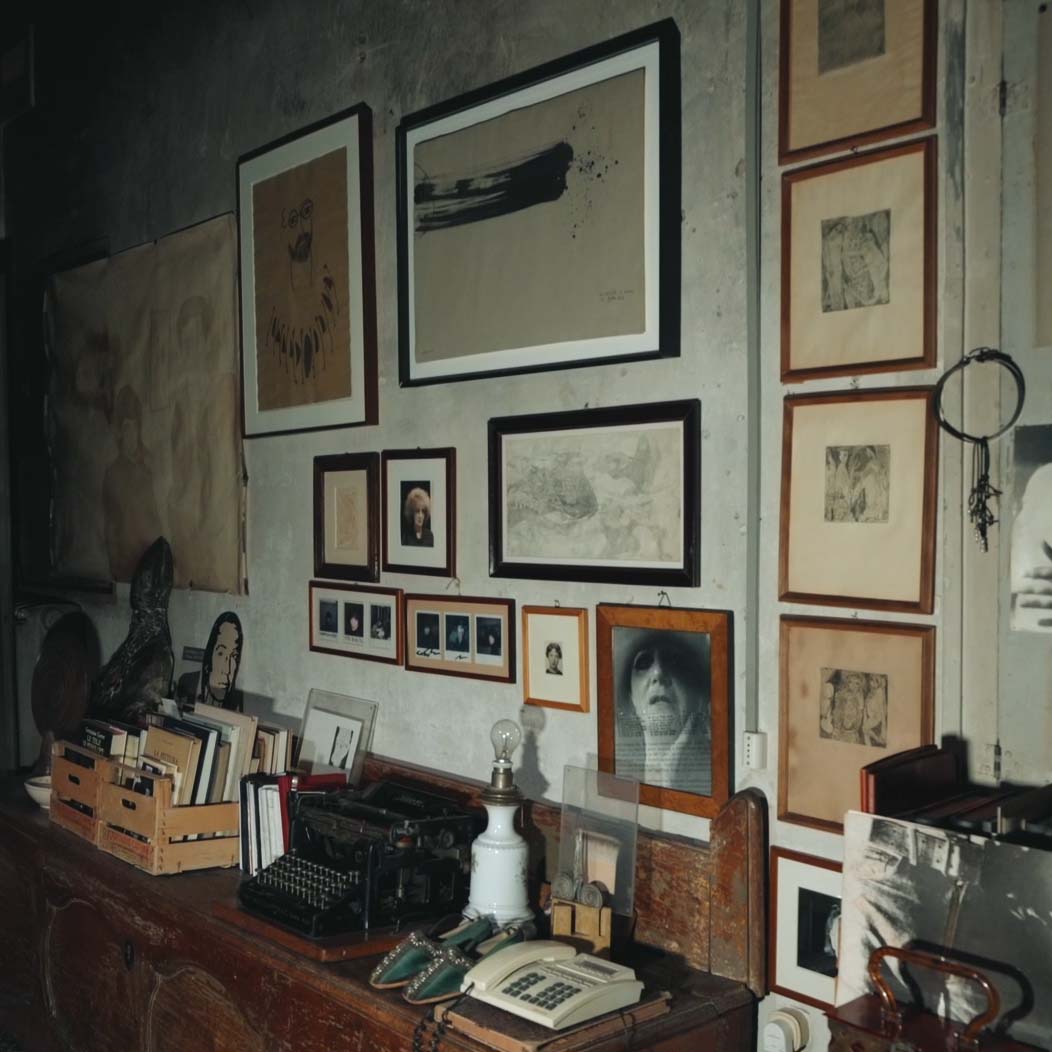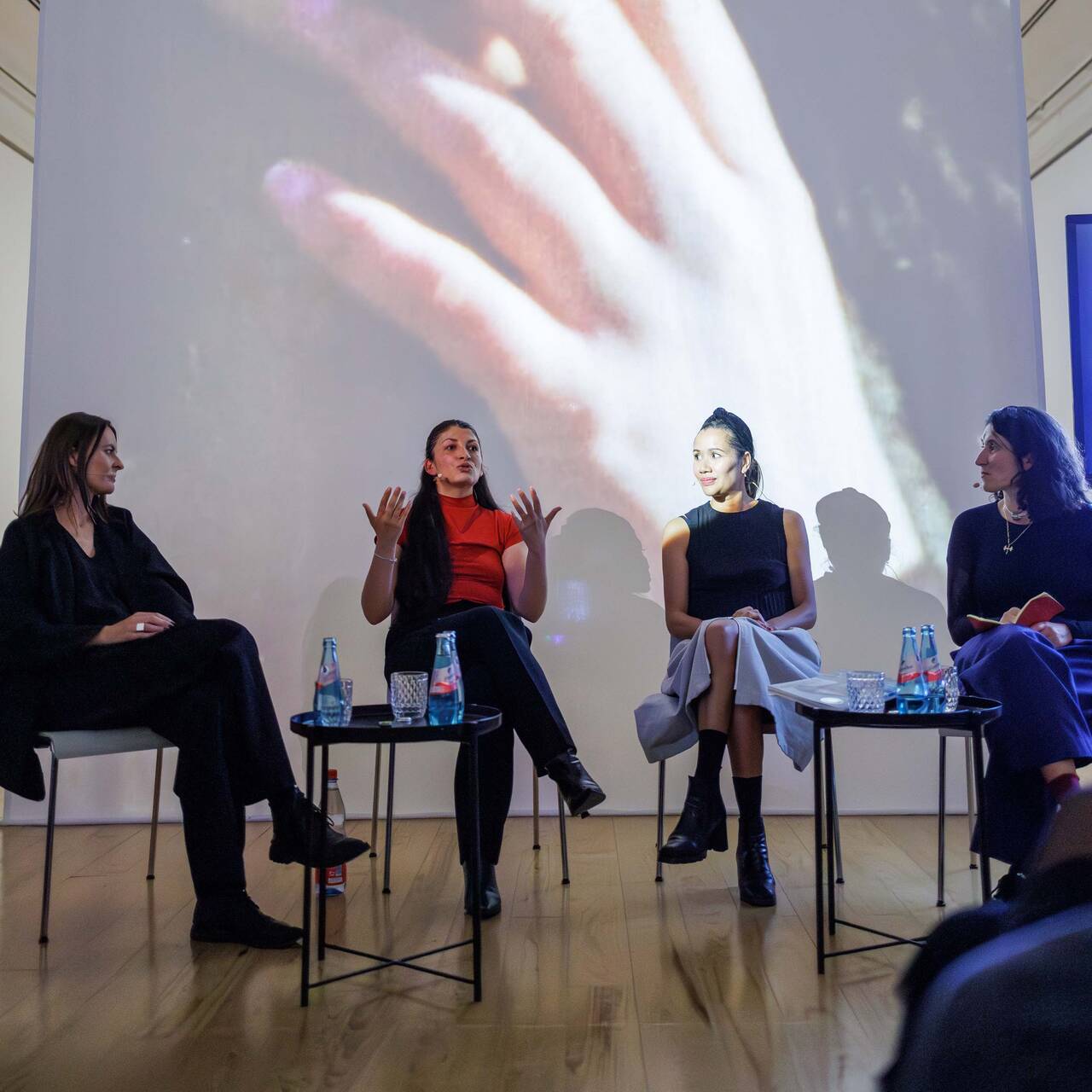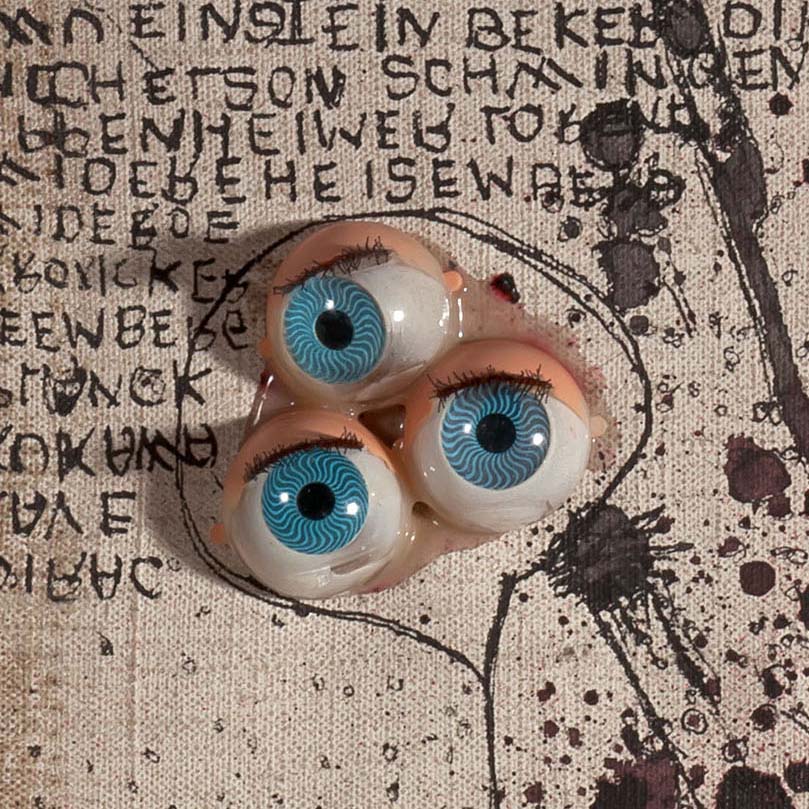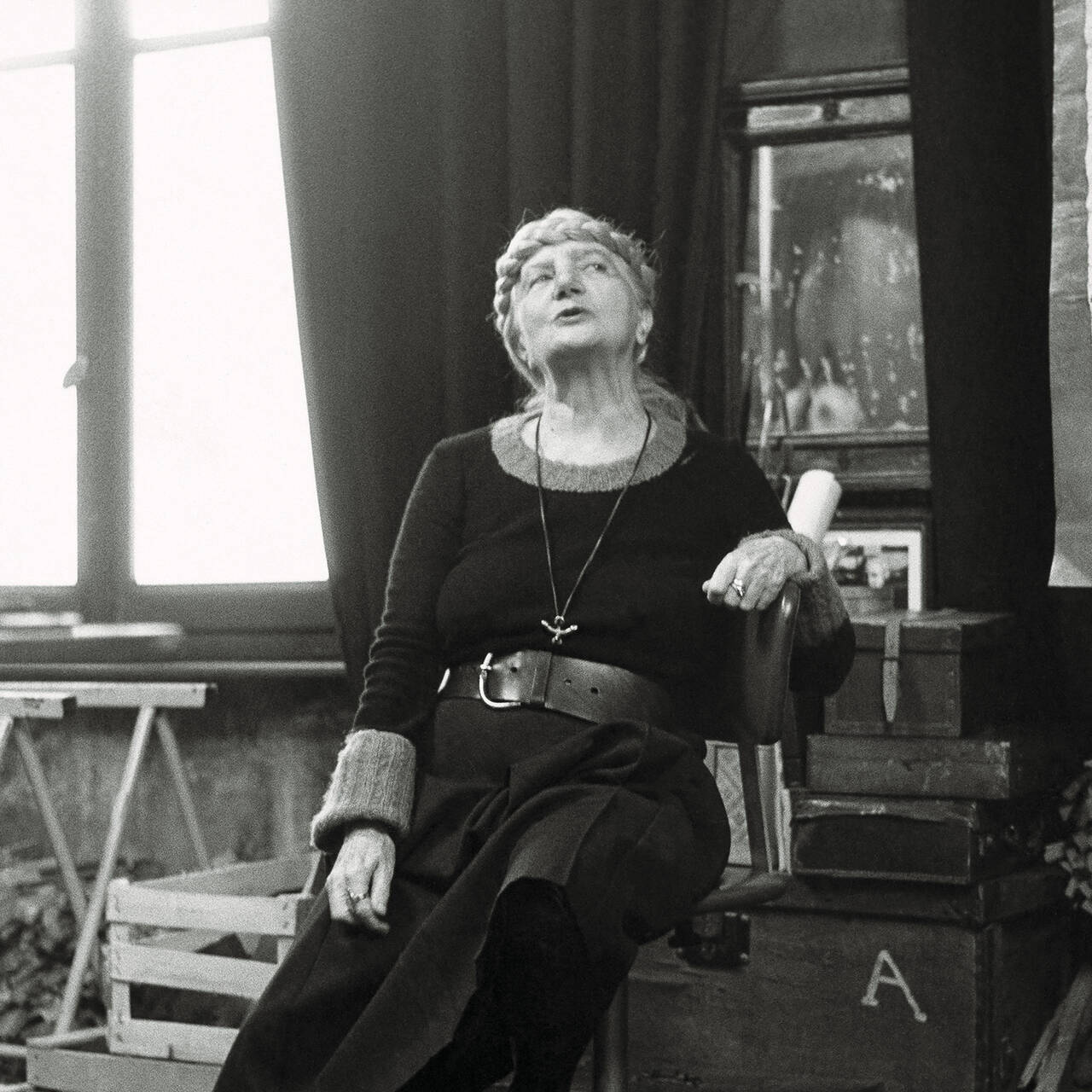In his essay “Ceci n’est pas une pipe” philosopher Michel Foucault explores the subtleties of Magritte’s visual form of linguistic criticism.
This is not a pipe – “Ceci n’est pas une pipe.” For his essay on the relationship between language and image in Magritte’s painting published in 1968, French philosopher and social theorist Michel Foucault selected two of the painter’s arguably now best-known works, namely “La Trahison des images (Ceci n’est pas une pipe)” from 1929 and “Les Deux mystères” (1966), produced almost 40 years later.

Michel Foucault, Image embedded via wikipedia.org
The latter painting features a reappearance of the motif from the former. We see a drawing of a pipe as though on a framed school blackboard held by an easel. Underneath the drawing is the sentence “Ceci n’est pas une pipe,” and above it a second, larger pipe hovers in the otherwise empty space with the wooden floorboards. Foucault is open to the game of confusion and explores the ambiguity we so often encounter in Magritte’s art.
A pipe – isn’t it?
He imagines a teacher standing in front of his students in the painting “Les Deux mystères,” pointing to the painting and getting caught up in a web of assertions: This is a pipe, or no, it’s not actually a pipe, but a drawing of a pipe, and what’s more, the sentence “This is not a pipe” is likewise not a pipe, no, none of it is a pipe, neither the drawing nor the sentence. His students, who see the large pipe floating above his head, laugh at him. For there the pipe can very clearly be seen. Can’t it?
Michel Foucault, This is not a pipe, Image embedded via books.google.de
Yet precisely this is the quality of Magritte’s painting that Foucault terms non-affirmative. Indeed, although his painting style, clear, familiar, almost impersonal, encourages the observer to recognize the things “as something,” neither the drawn pipe on the board nor the word “pipe” nor the pipe floating above them are actually a pipe.
Contrary to representation
On Magritte’s canvas words and images are made of the same material. The artist intertwines verbal signs and sculptural elements; for him they have equal value, are even interchangeable. Foucault sees two of Magritte’s significant achievements in this. First, he makes language implode under the weight of its own meaning. With only their form depicted on the canvas, the letters pass into an undefined space, themselves becoming part of the depiction. They are intended to be seen, not read. In this way the artist ultimately also reveals the arbitrariness, the artificiality of language. Second, Magritte defies a form of painting that serves the mimetic representation of an external world.

The problem of similarity is at the core of this. Here Foucault distinguishes between the terms “resemblance” and “similitude.” “Resemblance” describes representation and implies a hierarchy in starting with an original object that another resembles. Magritte wrote in one of his letters to Foucault that only thought is capable of “resemblance,” by reproducing that which the world offers it, which it sees, hears and recognizes. “Similitude” on the other hand describes a form of similarity based on repetition and plurality.
How art can change our view of the world
In Magritte’s art there is no finger pointing from the canvas at something lying beyond it. It is much more the case that a game of transferred meanings within the image is set in motion that knows neither beginning nor end. The drawing of a pipe resembles a real pipe, the written text resembles the drawing of written text. Yet all the symbols in “Les Deux mystères” nullify the intrinsic similarity that they only seemingly bear within them, and open up an open, circulating web of similarities. Foucault calls it an “art of resembling” liberated from the “as if.”

Thus Magritte is less interested in painting itself and more in how art can change our view of the world. He explored semiotics, philosophy and phenomenology with interest, addressed questions of realism and similarity and in his correspondence with such theorists as Chaim Perelman, Alphonse de Waelhans and indeed Michel Foucault always advocated the idea that images and words were equal as means of expressing a thought process and conveying knowledge. Foucault acknowledged this and understood that for Magritte, painting itself was thinking.









